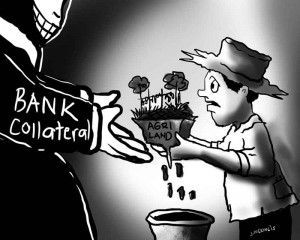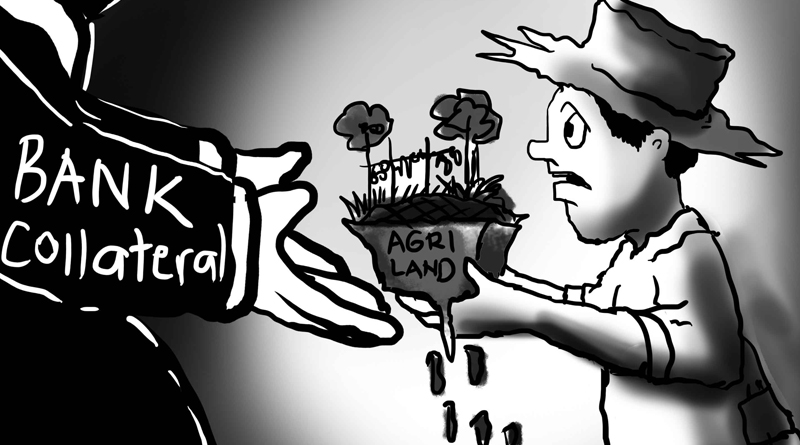 Â THE IRONY IS NOT LOST: record-breaking stock market rise but the poverty incidence in the Philippines remains high. Â Great GDP growth but there is no inclusive growth for the poor.
 THE IRONY IS NOT LOST: record-breaking stock market rise but the poverty incidence in the Philippines remains high.  Great GDP growth but there is no inclusive growth for the poor.
We searched for answers  everywhere as to why and found them enshrined in the official policies of the government, instead.
Sixty years ago, the three components of GDP sector ,namely, industry, service and agriculture contributed nearly equal at 33.3% each of the GDP. Today, agriculture which hires 40% of our people and which is the main livelihood of the majority of our  countrymen  in the rural areas contributes only 11-13% of the GDP.
It is a stunning decline of the poor sector’s industry and qualifies President Noynoy Aquino’s mantra ” walang mahirap kung walang corrupt”  as just one part of the equation of poverty alleviation. Government must pro-actively take the extra mile for the many who are poor, as well.
But how can that be -when the government’s leading economic planner Arsenio Balicasan of the NEDA (National Economic Development Authority) says that over time, agriculture as a parcel of GDP will always decline because the income of man is not elastic to agricultural products.
In layman’s terms- if Juan de la Cruz’ income increases, the increase he will use for service (travel) or industry (buy  a car) rather than buy more food.  That being his logic -infrastructure and credit flow (loans ) and the cost of borrowing (interest) -will never, therefore, favor the agricultural sector,mainly made of fisher folks and farmers, who are at a 40% poverty incidence rate.
Our argument for that is that if the rural folks’ incomes are raised because Government supports agriculture- their added income will not only allow them to eat three times a day and have clothing on their backs- they will also become  new  huge buyers of the products of industry and services.
We, therefore, urge any of our three congressmen, to take up where Senator Miriam Santiago left off with her proposed senate bill in the past  “Enhanced Collateral Value  of Farm Lands Act of 2002″. This was also a pet project of the former president Gloria M Arroyo- before she got hounded out of office due to her own political miscalculations.
Yet, this forms part of the key to unleash the vast potential of the Agricultural sector and will not only enhance the absolute growth of the GDP but make that growth truly inclusive to include the many of the poor in the rural areas.
As of now , banks do not accept agricultural land as bank collateral with the BSP’s tacit encouragement yet it was agricultural credit that transformed the once rural America into a Food Machine today.
One who believes such bias is not good for the Philippine economy is Bohol Chapter president of the BAP (Bankers Association of the Philippines) Â Deo Butawan.
Indeed, how can Agriculture sector flourished, when already hounded as it is by low productivity and backward technology, the banks  likewise still close their doors to massive agricultural credit lending because of the lack of collateral since  their main asset (agri land) is not accepted as collateral?
A law ought to be passed mandating banks to accept agri land as collateral and instead of being impediments to such policy, the DENR and the DAR (Department of Agrarian Reforms) must be accessory -allies to make such a borrowing proposal viable.
Imagine this will disqualify those classified as Agricultural land by the World bank (under arable, under permanent crops and under permanent pastures categories)  which is a huge 40% of the entire Philippine area for for development.
Consider that we are 100 Million Filipinos today, each needing to eat three times a day such that in 2010- behind camouflaged corruption- RP was the world’s largest importer of rice but now the 8th largest world palay producer Consider we grow sugar in 19 provinces in 390,000 hectares. The FAO of the United Nations ranks the Philippines  as No 1 producer with its 3.5 million hectares of land planted with coconuts but  57% of  coco farmers thriving below poverty line?.
We grow huge amounts of pineapples. bananas and mangoes and other agricultural products despite the benign neglect of government. How much more if there is a government all-out support?
The Government must be egged by the private sector to go full speed towards this before little will be left of the country’s agricultural land which are quickly converted every year into golf courses, gated subdivisions, industrial parks and resorts – all favoring the Industry and Services sectors.
Take Bohol and do an honest look at its land profile: 66% is agriland, 24% timberland and only about 10% for infrastructure , tourism and other industries and residences.
Imagine how much a modernized agri sector in Bohol using those vast unutilized land as collateral for business can produce fruits and food- not just for us, our tourists but possibly for export as well- if not to other provinces but to other countries as well. The key here is to improve the productivity rate of agri science in the country with proper financing and modernized technology.
While this proposed law may take some time to create its its own IRR or Implementing Rules and Regulations, Government can, in the meantime, extend  ‘guarantees” for agri borrowers of banks until these credit risks are replaced by the emancipated “land assets” forming the substitute collateral.
Deo Butawan is  bullish in proposing a position paper  through his chapter regarding the use of agri land as collateral to secure capital from banks. .  Who knows this tiny One Voice in this province may yet reach the portals of National Government  policy makers (with the help of our congressmen) and usher a Revolution in Agriculture in the nation.?
And emancipate the poor forever. Is this the key?

